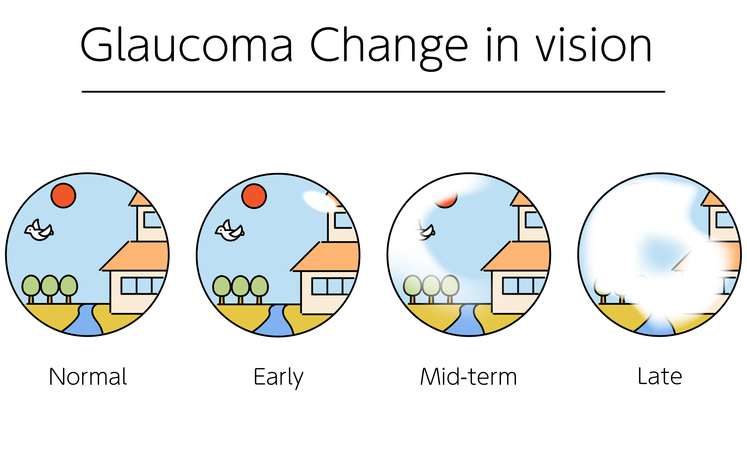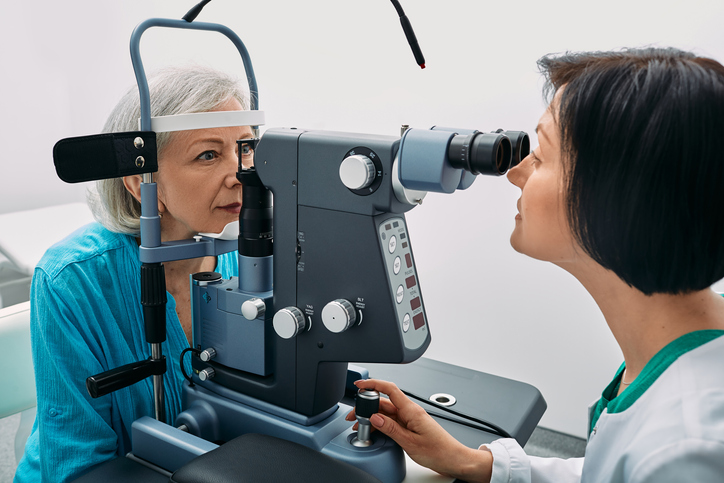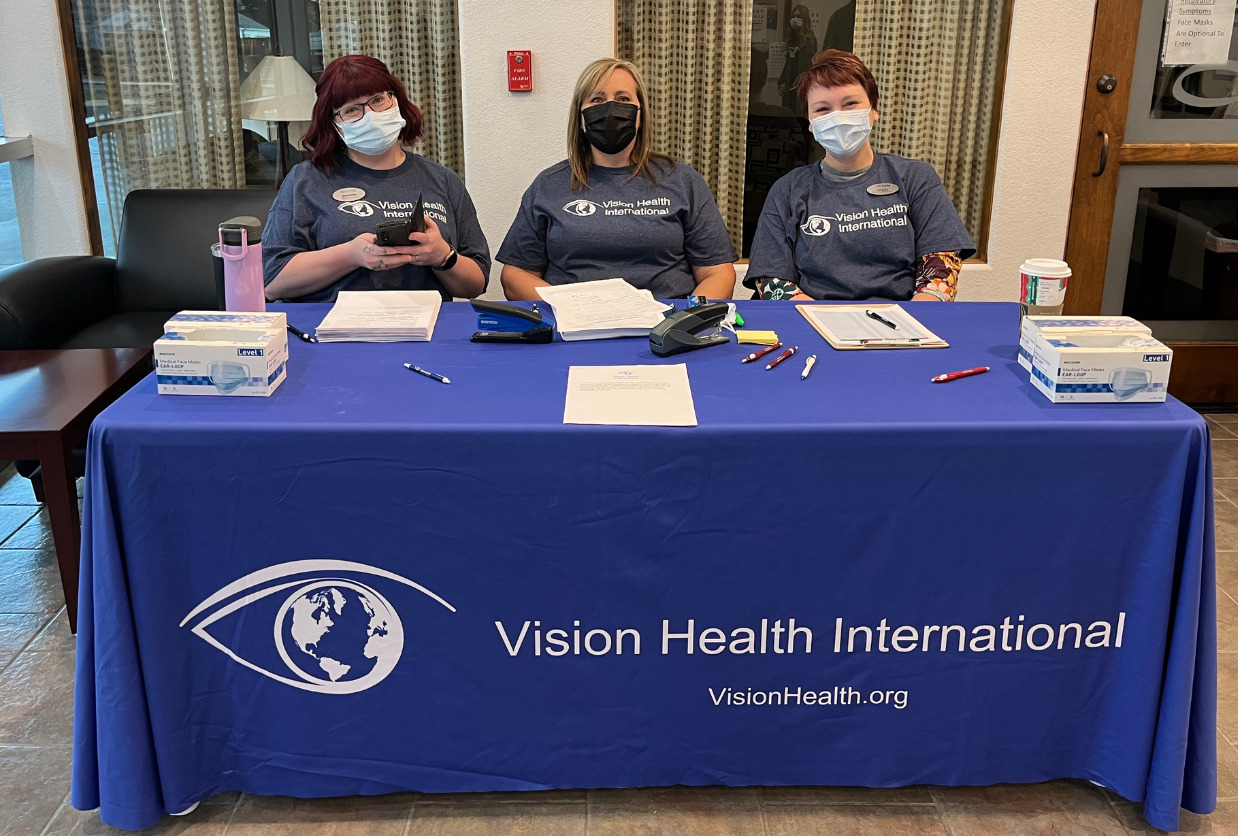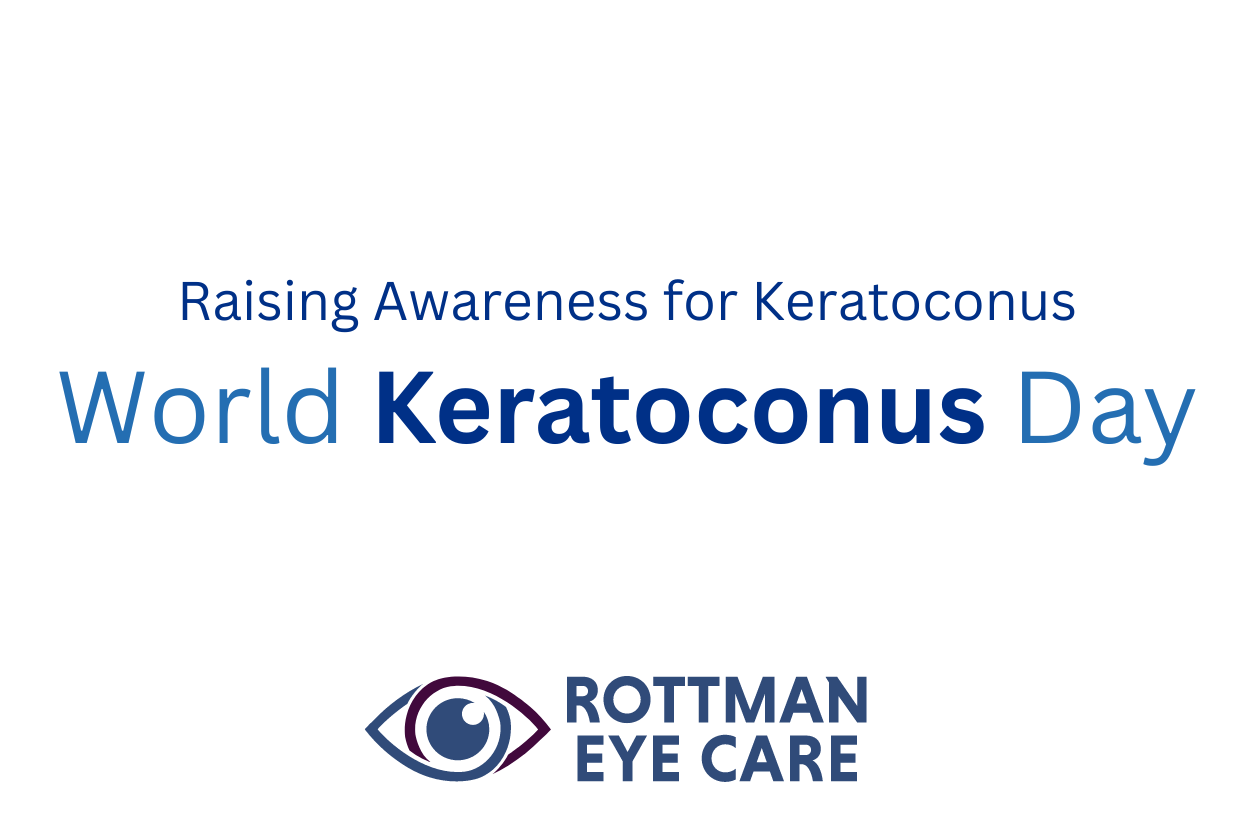National Glaucoma Awareness Month

January is National Glaucoma Awareness Month to spread awareness of this sight-stealing disease. According to the Glaucoma Research Foundation, there are currently over 3 million people in the United States alone that have glaucoma, although it is estimated that as many as 50% of them are unaware that they have it. The number of glaucoma cases is increasing, according to the National Eye Institute, and is predicted to reach 4.7 million people in the US by 2030.
What is Glaucoma?

Glaucoma is a progressive eye disease that causes damage to the optic nerve. Most commonly, the damage occurs when there is an abnormal buildup of fluid in the eye, which increases intraocular pressure, or the pressure in the eye’s interior. The eye constantly produceds a fluid, called aqueous humor, which usually drains out of the eye at the same rate as it is being produced.
If something is wrong with the fluid draining, the pressure will rise and damage the delicate structures of the optic nerve at the back of the eye. The optic nerve relays visual information to the brain to be processed, so damage to the area can cause vision loss and, if left untreated, eventual blindness. Once the optic nerve damage has been done, no treatment can undo it.
Types of Glaucoma
There are many types of glaucoma, but the two major types are Primary Open-Angle Glaucoma and Acute Angle-Closure Glaucoma.
Primary Open-Angle Glaucoma
Primary Open-Angle Glaucoma is the most common type in the United States, accounting for 90% of the cases. This type of glaucoma happens gradually, where the eye is not draining as quickly as it should. Think of it as a slow drain in your shower, where you end up standing in an inch of water instead of it all going down the drain at the same rate it is falling from the shower head. As the pressure builds, the optic nerve slowly gets damaged.
This type of glaucoma is painless, with no immediate changes to sight. Many patients don’t have any symptoms in the early stages, and the damage to the ocular nerve is often severe by the time changes are noticed. With regular eye exams, open-angle glaucoma can be found early, and treatment can preserve vision.
Acute Angle-Closure Glaucoma
Acute Angle-Closure Glaucoma, also known as closed-angle or narrow-angle glaucoma, is the opposite of the slow advance of primary open-angle glaucoma. This happens when the iris (the colored part of the eye) is very close to the drainage angle and ends up blocking it completely.
This type of glaucoma would be more like putting a stopper over the shower drain while the water is still running. With the total blockage of the drainage canals, eye pressure rises rapidly in what is known as an acute attack. This is an emergency, and you should call your ophthalmologist immediately. If pressure is not reduced quickly, it can cause permanent vision loss.
Symptoms of Glaucoma
Open Angle Symptoms
For people with open-angle glaucoma, symptoms are not generally noticeable until vision loss occurs. Small blind spots may occur in the side or peripheral vision, but the center of vision is usually not affected until later in the disease progression. The inner vision, closest to the nose, is often affected first. Most people with this type of glaucoma don’t notice vision changes until the damage to the optic nerve is quite severe. This under-the-radar progression has earned glaucoma the reputation of being the “silent thief of sight.” Glaucoma usually occurs in both eyes but typically starts in one eye.
Acute Angle-Closure Symptoms
Acute angle-closure glaucoma does have noticeable early symptoms preceding an acute attack. Early symptoms include mild headaches, blurred vision, eye pain, and/or halos around lights. People experiencing these symptoms should get checked out by their ophthalmologist. An acute attack of angle closure glaucoma will include symptoms such as severe pain in the eye or forehead, decreased or blurred vision, redness of the eye, seeing rainbows or halos, nausea, headache, and vomiting. This is a medical emergency, and help should be sought immediately.
The Importance of Regular Eye Exams

While most people know to get a checkup from their primary care provider once a year, only some see their doctor for an annual eye exam. Regular eye exams are essential to preventative healthcare and are key to maintaining clear vision. As with glaucoma, many degenerative eye conditions can progress slowly and quietly, causing damage to be irreversible. Glaucoma is one of the leading causes of blindness worldwide; however, it can be prevented with early detection and treatment.
Glaucoma Risk Factors
While anyone can develop glaucoma, several factors might put someone at a higher risk of developing the condition. According to the American Academy of Ophthalmology, these factors include:
- Race – Glaucoma is most common in people of African, Asian, or Hispanic descent
- Age – People over the age of 40 are at a higher risk, with increased occurrence in people over the age of 60
- Family History – Having family members with glaucoma increases risk, especially if it is a sibling
- High Eye Pressure – A higher baseline pressure means that small increases in intraocular pressure can have more dramatic effects
- Farsighted (Hyperopic) or Nearsighted (Myopic) – Prior vision issues or abnormalities in shape can increase the risk of glaucoma
- Previous Eye Injury – Previous trauma to the eye can have many long-term effects
- Thin Corneas – People with thinner center corneas have higher chances of developing glaucoma
- Long-Term Steroid Medication Usage – A rise in intraocular pressure has been documented in patients with long-term steroid usage
- Other Total Health Issues – Diabetes, migraines, high blood pressure, poor blood circulation, and other health issues affecting the total body
Protecting Your Vision
Practice good eye health by scheduling regular eye exams, especially if you fall into one or more high-risk categories. Medicare will cover a glaucoma test yearly for people in high-risk groups. Even if you are not in one of the high-risk groups, the American Academy of Ophthalmology recommends a comprehensive eye exam at the age of 40, as that is when many eye conditions start to appear. Open-angle glaucoma is hereditary, so learning about family health history is also a good step.
Overall health maintenance and implementing healthy behaviors can play an equal part in preventing degenerative eye conditions. Maintaining a healthy body weight lowers the chances of developing diabetes or high blood pressure, decreasing the likelihood of developing glaucoma or glaucoma-like diabetic retinopathy. Monitoring and controlling blood pressure is important in keeping intraocular pressure normal. Being physically active and avoiding smoking are also excellent preventative measures.
Diagnosis
The only way to diagnose glaucoma is with a comprehensive eye exam; a screening that only checks eye pressure is insufficient to diagnose. During a glaucoma exam, your ophthalmologist will check intraocular pressure, inspect drainage angles, examine the optic nerve for signs of damage, test peripheral vision, and measure the thickness of your cornea. There might be additional testing based on findings specific to each patient.
Treatment
There are many treatment options for glaucoma, and your eye care provider will work with you to decide the best course of action following diagnosis.
Eye Drops
Glaucoma is commonly managed with medication in the form of eye drops. These eye drops can lower intraocular pressure in two main ways: some types of medication reduce the amount of fluid produced by the eye, while others help the fluid drain out of the eye better.
Laser Surgery
Laser surgery can be performed for both common types of glaucoma to help the fluid, or aqueous humor, drain from the eye. For patients with open-angle glaucoma, a procedure known as Selective Laser Trabeculoplasty (SLT) can be performed as a replacement for, or in addition to, medication. The surgeon will use a laser to help the drainage angle perform better and reduce fluid buildup.
Successful treatments with SLT can last anywhere from 1 to 5 years, and the patients can undergo this procedure multiple times. A Laser Peripheral Iridotomy (LPI) can be performed for patients with angle-closure glaucoma to give alternative routes for fluid flow within the eye.
Surgery
Laser surgery is not always the best option for every patient; sometimes lasers can’t be used or would be otherwise ineffective. In such cases, procedures can be done in an operating room. The surgeon can create drainage in the eye by removing tissue or installing a tiny shunt to direct fluid to surrounding tissue, where it can be absorbed more readily.
Contact Rottman Eyecare
In the United States, approximately 120,000 people have blindness caused by glaucoma, accounting for 9% to 12% of all cases of blindness. Vision loss from glaucoma is preventable, and the experts at Rottman Eye Care are ready to help you maintain your eye health. Give us a phone call to schedule a consultation today and take the first step towards a healthier vision.
[DISPLAY_ULTIMATE_SOCIAL_ICONS]

